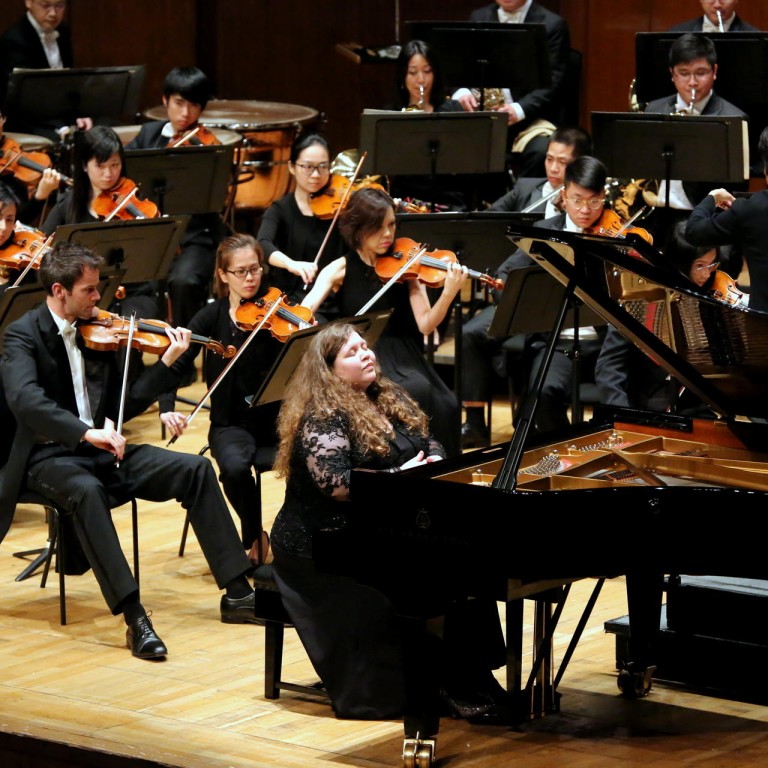
Review: Hong Kong Sinfonietta and Bulgarian pianist Plamena Mangova
Hong Kong's own Sinfonietta is younger and smaller than some of the international ensembles seen at this year's Hong Kong Arts Festival, but it nevertheless provided an exciting concert with a world premiere, a Tchaikovsky crowd-pleaser and a challenging Sibelius symphony.
Hong Kong's own Sinfonietta is younger and smaller than some of the international ensembles seen at this year's Hong Kong Arts Festival, but it nevertheless provided an exciting concert with a world premiere, a Tchaikovsky crowd-pleaser and a challenging Sibelius symphony.
It was an evening of subtlety and poetry, starting with Joyce Wai-chung Tang's evocative . About inner clarity of mind, this piece had a hovering, searching quality. The rhythms floated and the harmony was veiled, with the occasional solid downbeat or straightforward minor chord. Spiralling solo lines by the flute, violin, cello and oboe were lyrical and plangent.
To my ear, the climax of the piece was a powerful flute note played by Sami Junnonen, underscored with cymbals. Subtle but effective.
Bulgarian pianist Plamena Mangova also struck a refreshingly poetic note in Tchaikovsky's Piano Concerto No 1. The famous opening chords that crash up the keys had a playful personality. Mangova's clear touch and articulation created a rainbow of colours. Her phrasing was warm and personal but always serving Tchaikovsky's ideas, never self-indulgent. The orchestra provided a sensitive background and the horns shone boldly in the opening.
Sibelius' Symphony No 5 is a challenge, and conductor Yip Wing-sie and the Sinfonietta, gave a performance that, while not perfect, was convincing. It took a while to gather momentum - the openings of the first and second movements were a bit ragged.
In the first movement Sibelius created an unsettled harmony and texture, echoing the mood of Tang's . But the orchestra soon arrived at the true Sibelius note of oceanic grandeur.
The strings bowed like precise bees in the third movement. Huge brass chords rolled in the final, theme, later deepened by the strings, a fitting conclusion to the long search.
